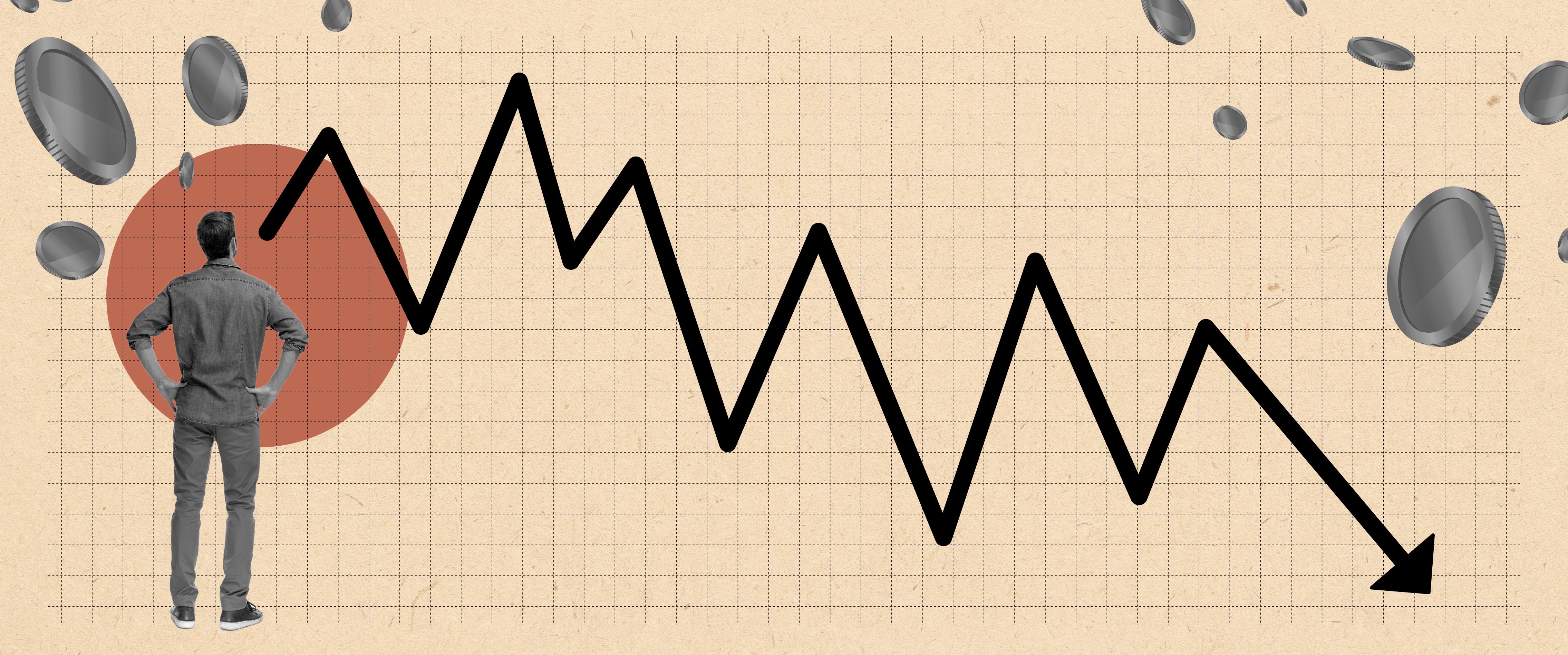Is there an impending recession or are we already in one? Should we increase our marketing spend, or slash costs? The intricacies of the global economy and current geopolitical issues have undoubtedly been trickling into our everyday lives with questions of doubt, uncertainty, and hesitation.
Now, we (your favorite Ads & Analytics team from ChatterBlast) aren’t here to speak on politics, real estate bubbles, or even the state of America’s economy. We’re here to answer one simple question: during times of economic downturn, should marketing spend reduce, maintain, or increase?
REDUCE

Marketing during a recession has seen systematic declines over the history of the United States. During the 2008 financial crisis, marketing spend dropped 27% across all channels according to MIQ, and this number doesn’t account for the major growth in newer channels and social media platforms that are now widely used.
This reaction, on the surface, is understandable. Increasing marketing spend, or even simply maintaining it, during a recession may seem counterintuitive when costs need to be cut. Reduction in sales and loss of profits prompts everyone to slash spending in areas that are otherwise standard business practice.
But when profits and revenue are down, cutting your marketing budget will only perpetuate that downfall, resulting in even more losses. On the other hand, increasing spend whilst competition is cutting back increases market share and will improve your results.
So this pattern of cutting marketing budgets doesn’t (and shouldn’t) have to repeat itself today. If there is a drop in the United States economy and the recession hits, lowering advertising efforts can create a compounding effect that ultimately perpetuates the loss of profits.
MAINTAIN

In the digital age we live in, marketing isn’t a luxury, but a necessity. So without a question, spend needs to continue. (And no, I promise this isn’t a sales pitch.)
There are a multitude of benefits when it comes to maintaining advertising budgets during economic downturn. For one thing, the amount you’ll be spending will lessen regardless. In digital marketing, we see a massive decrease in key metrics like cost per click and cost per mille during a recession. In linear advertising, we see less costly placements for the best time slots.
In other words: you’re targeting more of your desired audience, at more desirable time slots, all at lower costs. Don’t waste that kind of opportunity!
Still, when it comes to considering a change in ad spend, there are lots of variables to consider—what’s my product or service, is it a necessity or a luxury, do we offer common goods or a unique product? But at the end of the day, the easiest and most efficient way to market, no matter what kind of economy we’re in, is through customer retention tactics.
Losing revenue to cheaper competitors and brand alternatives can be fatal for businesses. Hence, customer retention is key in staying afloat during a recession. Digitalgenius outlines the importance and cost effectiveness of customer retention especially during economic turmoil, from repeat purchases to customer referrals. This should be the golden standard across every industry when it comes to marketing goals during a recession.
INCREASE

Of course, the opportunity to obtain new customers is too great to be ignored.
Historical data heavily implies companies that continued marketing spend, or had the ability to increase spend during a recession have not only been able to stay afloat, but even thrived.
Taboola Blog outlines some of the great marketing success stories during recessions. These include Lendingtree’s Lend A Hand campaign and Adidas’ #RunForTheOceans Campaign, which both invest in community-based, social mission issues. We see even more success throughout history from Forbes, outlining the past century’s greatest recession marking tactics from Honda Civic’s fuel efficiency campaign to the dry cereal boom of the 1920s.
These examples show that positive messaging and reinforcement help the brand, make customers happy, and utilize the low-cost market in adventitious ways. This, coupled with consistency in the face of recession, ensures people not only continue to recognize a brand, but also demonstrates the company’s strength and stability in times of uncertainty.
Ultimately, increasing ad spend during an economic downturn is an incredible opportunity to grow a brand’s appearance and positive public opinion for long-term growth. Seeing consistency throughout a recession and familiarity with a brand when individuals have lower buying power will help future sales. This can then pay dividends in the years following when the inevitable economic recovery comes. (Of course, this is dependent on having solid, long-term strategies in place. Strategizing only for economic downturn can be just as detrimental as cutting spend in the first place, as seen in the case of Peloton’s current predicament.)
I get it: increasing or maintaining marketing spend during a recession may seem counterintuitive at first glance, but the benefits (both short-term and long-term) are clear, and opportunity remains ever present. Rather than headlessly slashing budgets, the best way to combat market waste is by doing audits on all channels and monitoring progress throughout the economic downturn.
All of which just goes to show the age old adage still rings true: “When times are good, you should advertise. When times are bad, you must advertise.”



